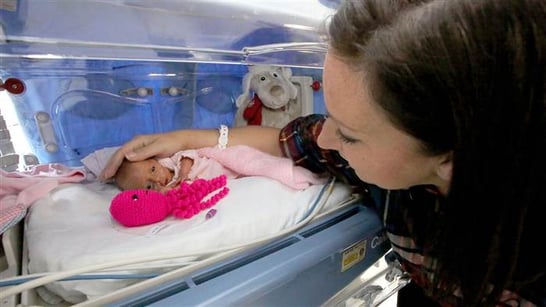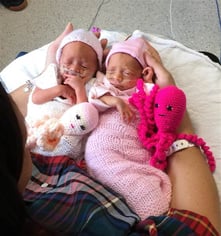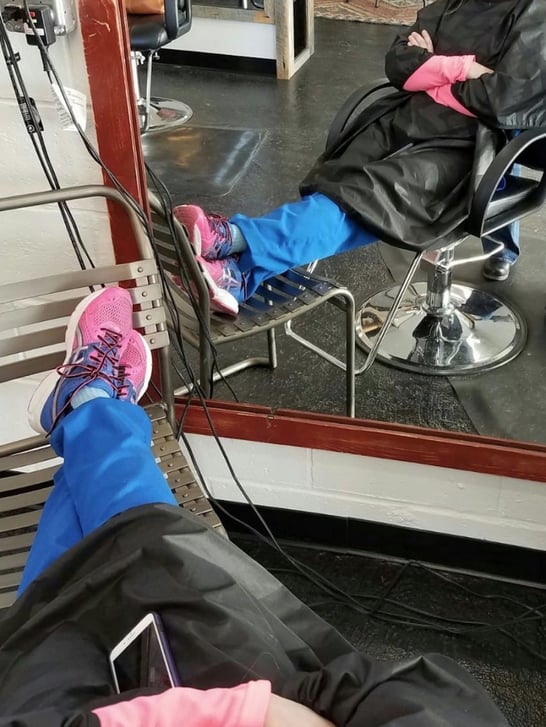Many healthcare organizations are striving to ensure sensitive and equitable care for individuals who identify as lesbian, gay, bisexual, transgender, or queer (LGBTQ). Recent societal changes, including the legalization of gay marriage and Caitlyn Jenner’s very public journey to transgender female, have raised public awareness of LGBTQ issues. Yet many nurses find gaps in knowledge when caring for LGBTQ patients.
Healthcare curricula in colleges and universities are still sadly lacking content regarding the unique needs of, and health risks for, individuals who fall outside the “traditional” heterosexual orientation of society. However, you can prepare for meeting the needs of these individuals by informing yourself, listening, and making some simple and practical adjustments in your nursing practice.
LGBTQ persons experience a number of healthcare disparities for many reasons: discrimination and social pressures, personal sexual behaviors, limited access to health insurance, higher rates of smoking and alcohol/substance misuse, higher rates of anxiety and depression, greater risk of sexually transmitted infections (including HIV), and increased incidence of some cancers. And when nurses encounter LGBTQ individuals in the clinical setting, they may create or contribute to these barriers to quality care due to lack of understanding and personal bias.
1. Expand your knowledge about sexual orientation and gender identity
To understand the needs of LGBTQ patients, nurses must expand their own knowledge on the subjects of sexual orientation (SO) or attraction, and gender identity (GI), or how one identifies with and experiences the world. Sexuality has long been defined as heterosexual by the dominant society, yet in reality, it encompasses a spectrum of needs, desires, and behaviors that can be fluid and changing over time.
2. Know key LGBTQ definitions
You can read about the meanings of asexual, gay, lesbian, bisexual, pansexual, and “queer,” descriptors that fall under the SO umbrella, as pointed out in More than Pink: LGBTQ Breast Health, a report published by Susan G. Komen, Puget Sound. Note that “queer,” formerly considered a derogatory term, is now considered by some to be a more fluid and inclusive descriptor than other words related to sexual orientation. Also, learn the meaning of terms such as agender, cisgender, transgender, gender fluid, and others that typically describe an individual’s gender identity.
3. Deepen your LGBTQ knowledge
Deepening your knowledge base will enrich your understanding of sexuality in general, and increase your nimbleness in identifying potential health risks for patients seeking your care.
Keep your knowledge up-to-date with ongoing training, reading, and learning from others who are skilled in communicating with and caring for these patients. Some good websites that can help you further your understanding include the Centers for Disease Control and Prevention, the GLBT Health Access Project (Community Standards of Practice Section), Trans-Health.com (online magazine), Women’sHealth.gov, and many others, including sources for this article.
4. Create a welcoming environment for LGBTQ patients
LGBTQ individuals have a long history of discrimination at the individual and institutional levels, including the healthcare system. They may “scan” an environment to determine if it is a safe place to reveal personal information, especially about sexuality. Some things an individual may watch for and take note of during their time in your reception or waiting room area:
- Your organization’s nondiscrimination policy: Is it in a visible location?
- A rainbow flag, pink triangle, or other symbol of inclusiveness
- Availability of unisex restrooms
- Health education literature with diverse images and inclusive language, including information about LGBTQ health
- Posters announcing days of observance such as World AIDS Day, Pride, and National Transgender Day of Remembrance
5. Use inclusive language
It may take a little practice, but you can shift your vocabulary towards inclusiveness, opening the door for more open healthcare discussions. This can begin right in the waiting room as patients complete required forms. Rather than asking marital status, for example, the form might read, “relationship status: married, partnered, or other.”
When asking patients to provide their names, include an additional space indicating “Preferred Name,” as a transgender individual may not wish to be called by a name that reflects their gender identity. Including “preferred pronoun” on a form shows understanding that someone may not identify as they appear.
6. Use gender-neutral language
Approach each interaction with open-mindedness, and a nonjudgmental attitude. Remember, your job as a healthcare professional is to assist the person in solving a health concern, or reducing the risk of future health problems. If your patient doesn’t feel comfortable sharing behaviors with you that are relevant, what good is the interaction? Conveying that the information shared in the provider-patient interaction is confidential may alleviate fears your patient has.
When asking questions about sexual history and behaviors, preface questions with a statement such as, “So that I can best advise you about your health, I’d like to ask some questions related to sexual behaviors that I ask all my patients. ” Or, “It is our standard practice here to take a sexual history for every patient we serve.”
7. Ask open-ended questions
For example, asking, “Is there anything else that would help me ensure you get the most out of this visit?” can help patients share relevant health information.
Do not overwhelm patients with questions unrelated to the reason for their visit, or to enhance your own knowledge about transgender health. Focus on the behaviors impacting health rather than on SO/GI per se, so the conversation can positively influence health and foster acceptance.
Prevent any “awkward pause” immediately after a patient shares SO/GI information. Practice your response in advance, such as “Thank you for being open with me; this will help me provide better care for you.” Role-playing your response can increase your own comfort with these situations.
8. Reflect the patient’s language
Avoid applying labels such as “gay.” Some people do not self-identify with any particular descriptive label, yet may have sex with partners of more than one sex or gender. Do not presume. For example, lesbian or gay men may have had or have sexual experiences with individuals of the opposite sex, and bisexual individuals may have long periods of monogamy; keep in mind that sexuality can evolve over time.
9. Investigate mental and physical health risks for LGBTQ patients
Be aware of the unique social pressures and health risks of LBGTQ patients. Societal phobias, violence, and hate crimes – and the fear of them -- are all too real for these individuals. Along with the potential for being ostracized from family and other social groups, this can contribute to chronic anxiety and depression.
LGBTQ individuals who are members of minority populations often face a double whammy of discrimination. Those with non-conforming sexual orientation or gender identity may also experience higher risk of suicide, as well as increased likelihood of tobacco use and drug/alcohol misuse.
It’s also important to build your awareness of the specific physical health problems LGBTQ individuals face. Lesbian women are more at risk for certain cancers due to the prevalence of obesity, nulliparity, or later pregnancy. Lesbian women are susceptible to many of the same sexually transmitted infections as heterosexual people and gay men. Thinking that this population isn’t at risk for these STIs can result in lack of appropriate screening and treatment. In addition to HIV infection, gay men may be at higher risk for anal cancer and can be particularly susceptible to body image issues in the desire to be attractive to other men. They may also experience a variety of cancers resulting from increased obesity and use of tobacco and alcohol.
10. Convey respect
Always remember that the LGBTQ patient in front of you has taken a courageous step to be in your office and disclose some of the most personal information about their lives. Having as positive and affirming an experience as possible will make it more likely the individual will seek future care in a timely manner.
Becoming aware of resources specifically designed for LGBTQ individuals and making referrals as appropriate (e.g., support groups, smoking cessation groups or AA meetings, etc) will convey that you care enough to become informed about their particular needs. The quality of your interaction can truly make a difference in someone’s health -- and life.
Interested in more Diversity and Inclusion to-do's?

 Recently, Indeed.com – a massive job search platform that greets over 200 million monthly visitors – took a look at which cities in the U.S. pay nurses the most while giving them the biggest bang for their bucks. The west of the U.S. – California especially – was overwhelmingly dominant.
Recently, Indeed.com – a massive job search platform that greets over 200 million monthly visitors – took a look at which cities in the U.S. pay nurses the most while giving them the biggest bang for their bucks. The west of the U.S. – California especially – was overwhelmingly dominant.




 Have you heard the term “moral distress”? It might be something you deal with occasionally in your job. You might have to go along with a decision made by a patient’s family member or it could be a decision made at you place of employment that makes you uncomfortable. This is moral distress.
Have you heard the term “moral distress”? It might be something you deal with occasionally in your job. You might have to go along with a decision made by a patient’s family member or it could be a decision made at you place of employment that makes you uncomfortable. This is moral distress. When Nurse Tommy Sing answers a patient's call he has to put his game face on, literally. Sing spends his days pushing different buttons on medical machines as well as game controllers. He may want to keep his actual day job though
When Nurse Tommy Sing answers a patient's call he has to put his game face on, literally. Sing spends his days pushing different buttons on medical machines as well as game controllers. He may want to keep his actual day job though Do you or someone you know, love to knit or crochet? Perhaps you’d be interested in putting those skills to work for a terrific cause.
Do you or someone you know, love to knit or crochet? Perhaps you’d be interested in putting those skills to work for a terrific cause. 
 With so many choices for Nurses to work including hospitals, schools, hospice, home health care and numerous companies, does your place of employment appear on Becker’s 150 Great Places to Work in Healthcare? Employee development, Mentoring and Leadership opportunities were factors that helped determine who landed on this list.
With so many choices for Nurses to work including hospitals, schools, hospice, home health care and numerous companies, does your place of employment appear on Becker’s 150 Great Places to Work in Healthcare? Employee development, Mentoring and Leadership opportunities were factors that helped determine who landed on this list.
 Nurses do so much, including laying our heads down to rest during our toughest moments. A hair stylist had the opportunity to turn the tables and let the Nurse do the resting and let her be taken care of. The stylist wanted the Nurse to have no worries and be completely relaxed and safe in her hands at that moment, the same way a Nurse treats a patient.
Nurses do so much, including laying our heads down to rest during our toughest moments. A hair stylist had the opportunity to turn the tables and let the Nurse do the resting and let her be taken care of. The stylist wanted the Nurse to have no worries and be completely relaxed and safe in her hands at that moment, the same way a Nurse treats a patient.  The field of Nursing has changed in many positive ways in the past 10 years. From the growth of Leadership positions in Nursing and new technology to the addition of new Nursing Specialties, there are many exciting things happening and you can be a part of it.
The field of Nursing has changed in many positive ways in the past 10 years. From the growth of Leadership positions in Nursing and new technology to the addition of new Nursing Specialties, there are many exciting things happening and you can be a part of it. 
 It’s all about Love! If you haven’t seen this video, it is beautiful. Watch it to brighten your day and then go give someone you love a hug.
It’s all about Love! If you haven’t seen this video, it is beautiful. Watch it to brighten your day and then go give someone you love a hug.